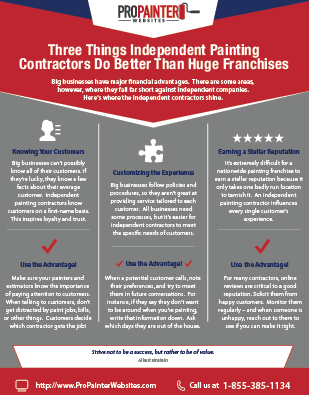Elements To Take Into Consideration For Commercial Outside Painting By Period: Important Information You Need To Have
Elements To Take Into Consideration For Commercial Outside Painting By Period: Important Information You Need To Have
Blog Article
Web Content Produce By-Leach Urquhart
When you're planning an industrial outside paint job, seasonal factors can make or damage your outcomes. You'll wish to consider just how temperature level and moisture impact paint application and drying out times. Selecting the appropriate season can ensure your paint adheres correctly and lasts much longer. However which home painting contractors near me are truly the best for this type of work? Let's explore the crucial elements that can influence your job's success.
The Influence of Temperature on Paint Application
When you're intending a business external painting task, the temperature can dramatically affect exactly how well the paint adheres and dries.
Ideally, you intend to repaint when temperature levels range in between 50 ° F and 85 ° F. If it's also chilly, the paint may not heal properly, resulting in problems like peeling or cracking.
On the other side, if it's too warm, the paint can dry too promptly, protecting against correct adhesion and causing an irregular coating.
You must additionally consider the time of day; early morning or late afternoon uses cooler temperature levels, which can be much more beneficial.
Constantly examine the producer's recommendations for the particular paint you're making use of, as they typically give guidance on the suitable temperature level array for ideal results.
Humidity and Its Result on Drying Times
Temperature isn't the only ecological variable that influences your industrial external paint project; moisture plays a substantial function too. High humidity levels can reduce drying times drastically, influencing the general top quality of your paint job.
When the air is filled with wetness, the paint takes longer to treat, which can cause concerns like bad bond and a greater danger of mildew growth. If you're repainting on a particularly damp day, be gotten ready for prolonged wait times in between coats.
It's essential to monitor regional climate condition and strategy appropriately. Ideally, go for humidity degrees in between 40% and 70% for optimum drying.
Maintaining these consider mind ensures your task remains on track and provides a long-term surface.
Best Seasons for Commercial Outside Paint Projects
What's the best season for your commercial external paint jobs?
Springtime and early autumn are typically your best options. During these periods, temperature levels are mild, and moisture degrees are frequently reduced, creating suitable problems for paint application and drying out.
Avoid summer's intense heat, which can create paint to dry also promptly, causing bad adhesion and finish. In a similar way, wintertime's cool temperature levels can impede correct drying and treating, taking the chance of the long life of your paint work.
Go for days with temperatures between 50 ° F and 85 ° F for optimum outcomes. Keep in mind to examine the local weather forecast for rain, as wet problems can destroy your project.
Planning around Highly recommended Website ensures your paint task runs smoothly and lasts much longer.
Conclusion
Finally, preparing your commercial exterior painting tasks around seasonal considerations can make a considerable distinction in the outcome. By organizing job throughout the excellent temperature levels and moisture levels, you'll ensure much better adhesion and drying times. Keep in you can try these out to watch on neighborhood weather report and select the correct time of year-- springtime and very early fall are your best bets. Taking these steps will certainly help you accomplish a durable and specialist coating that lasts.
